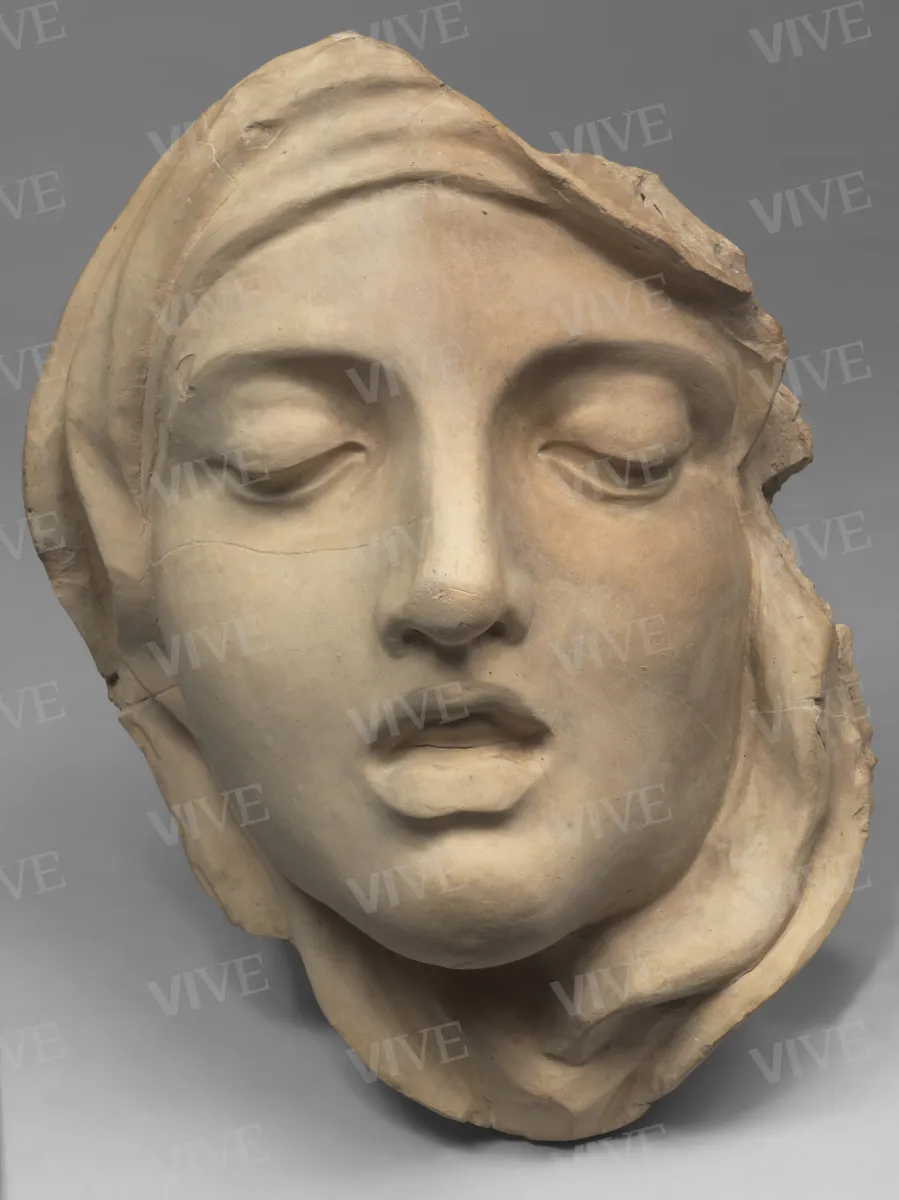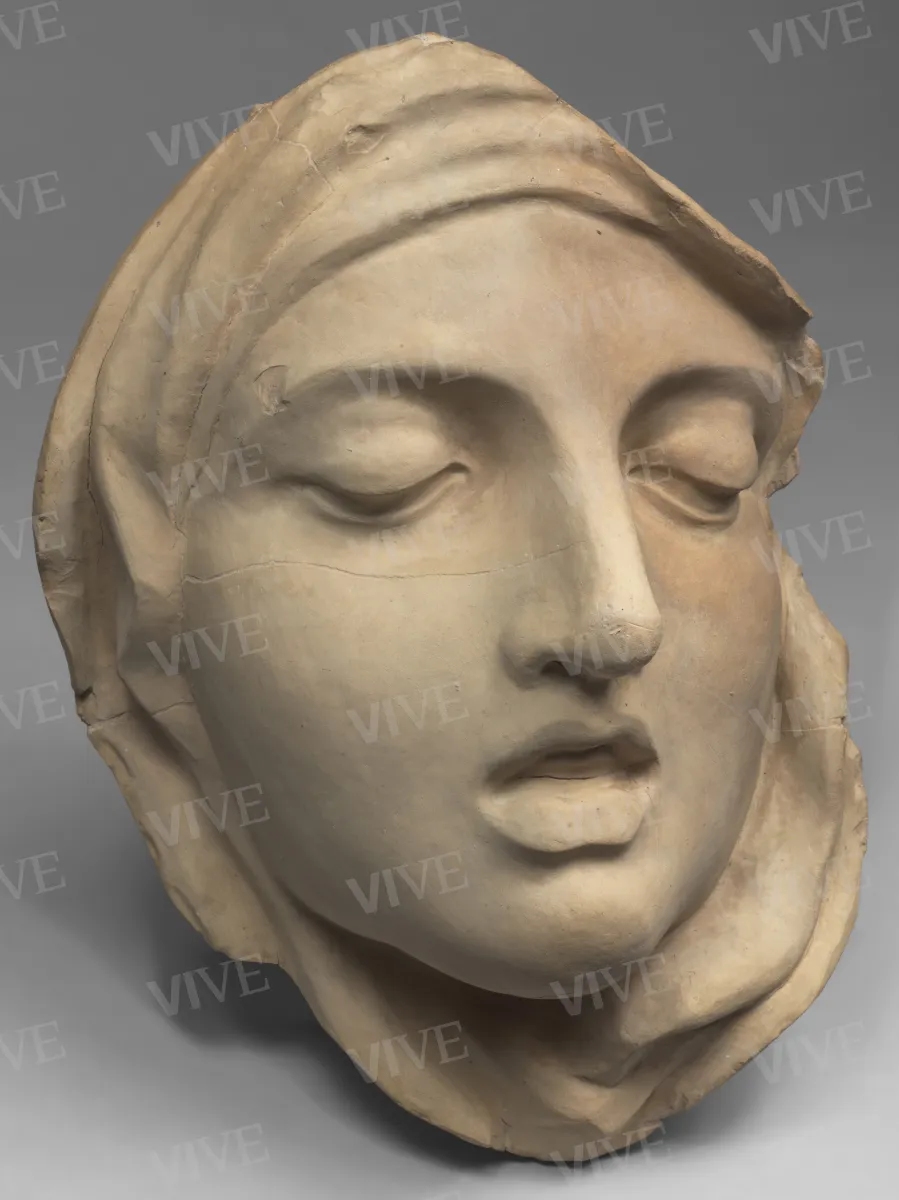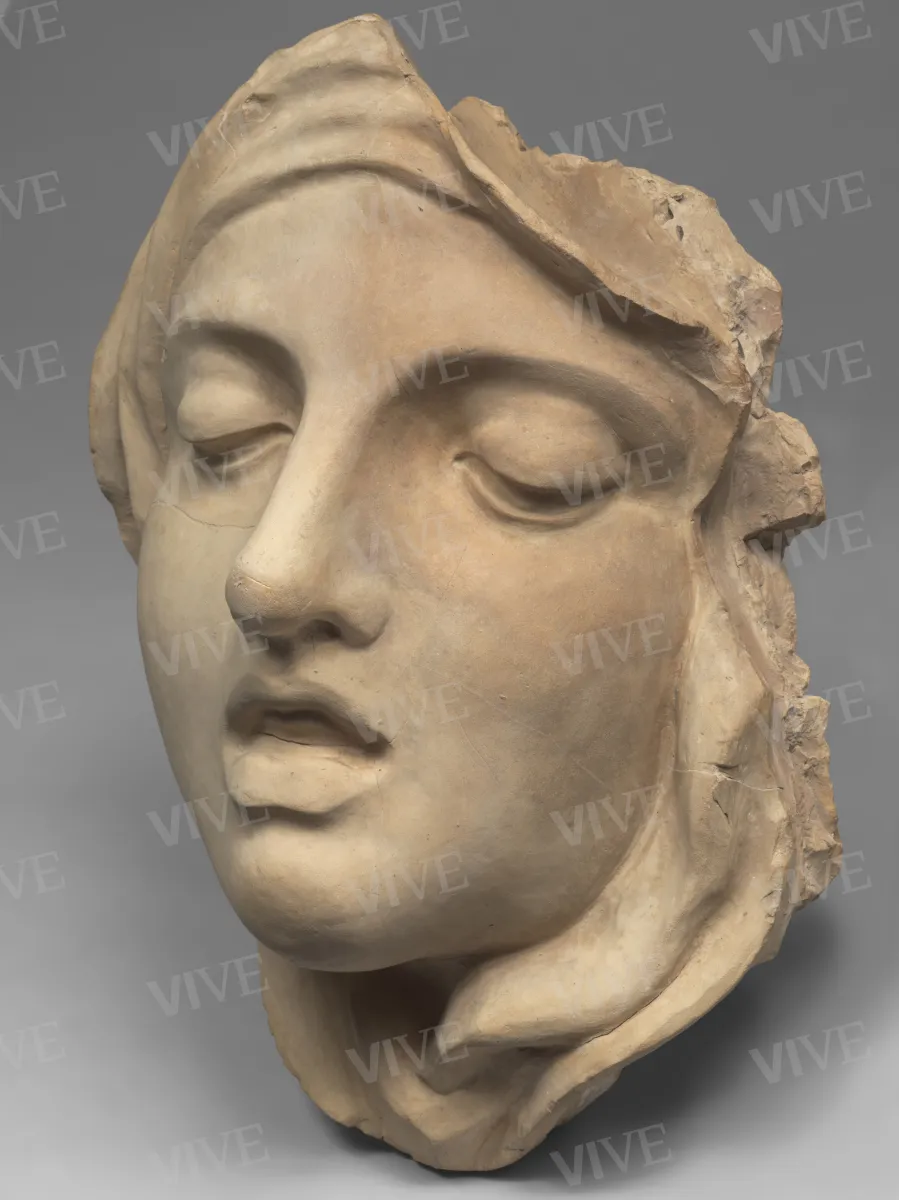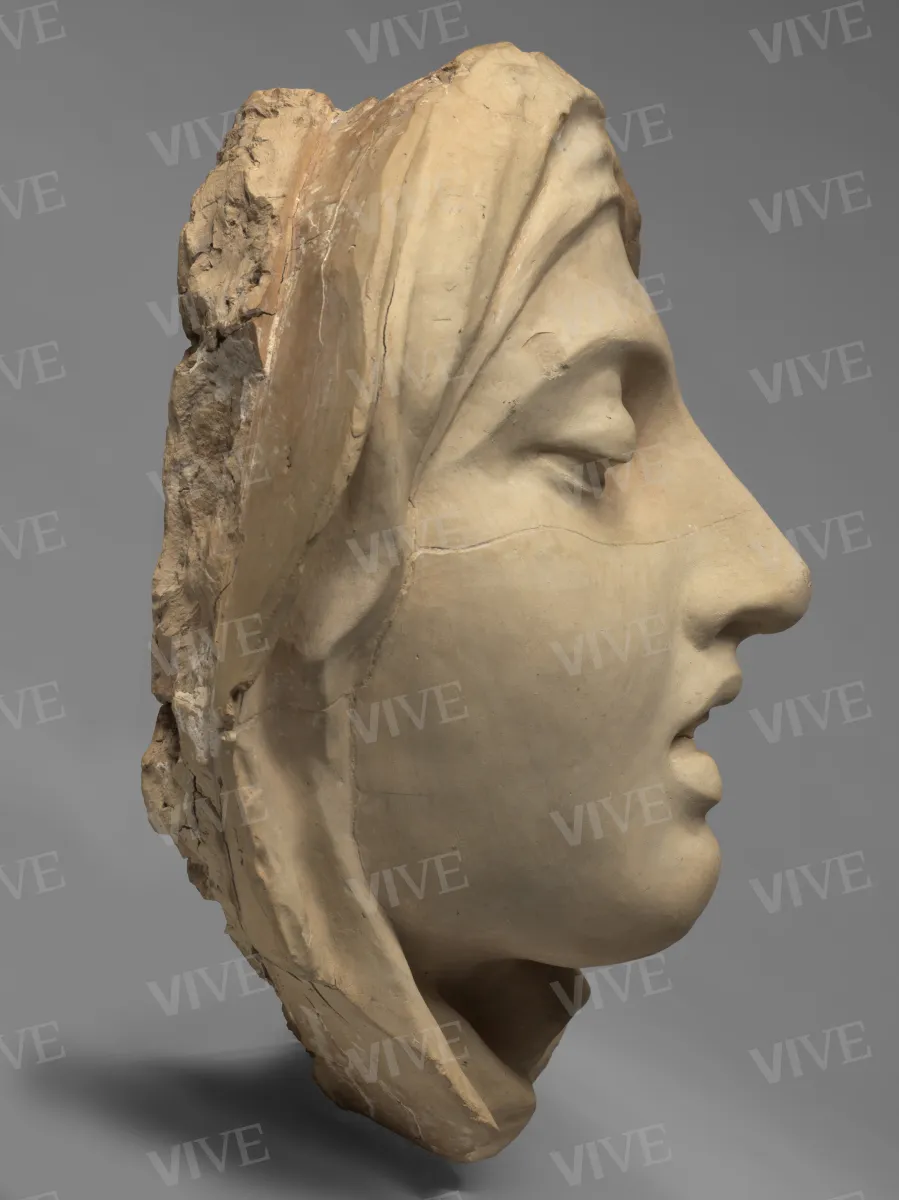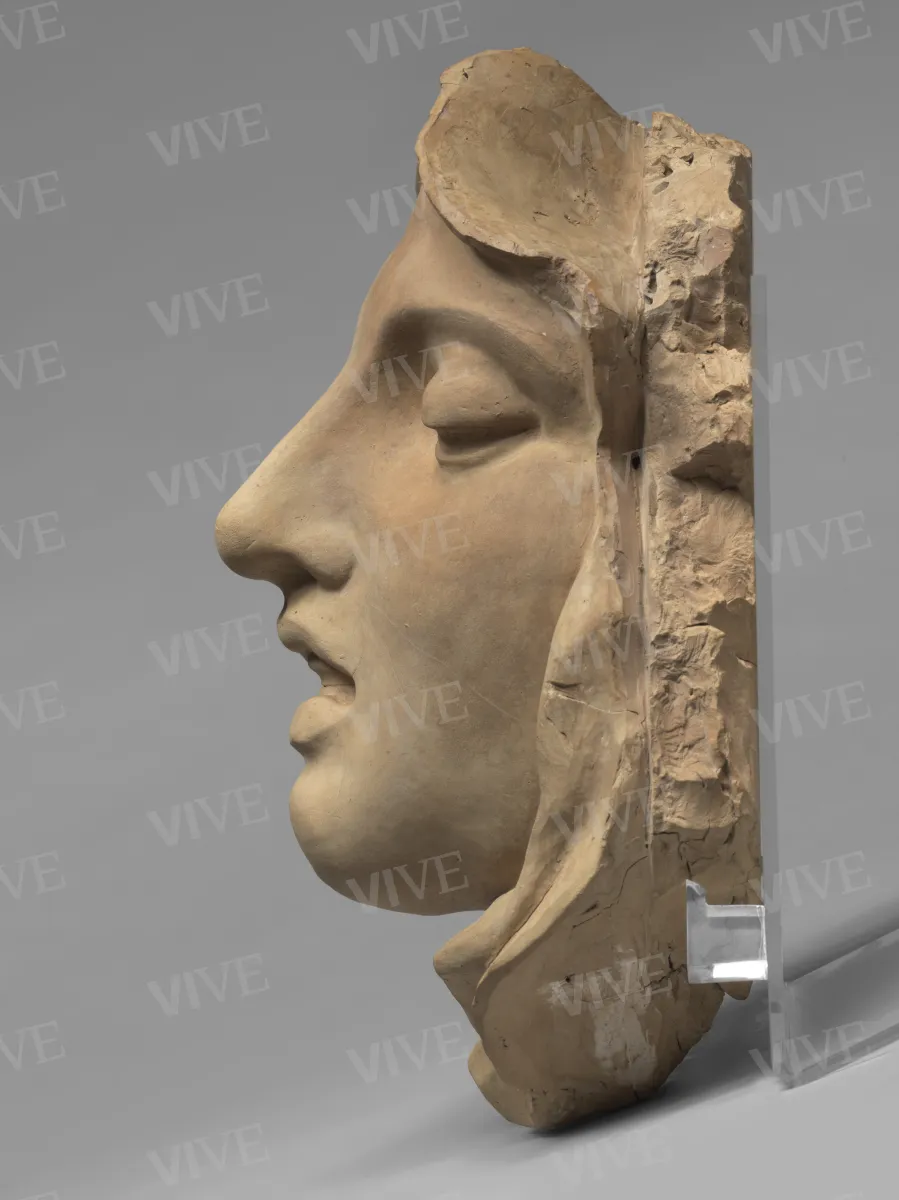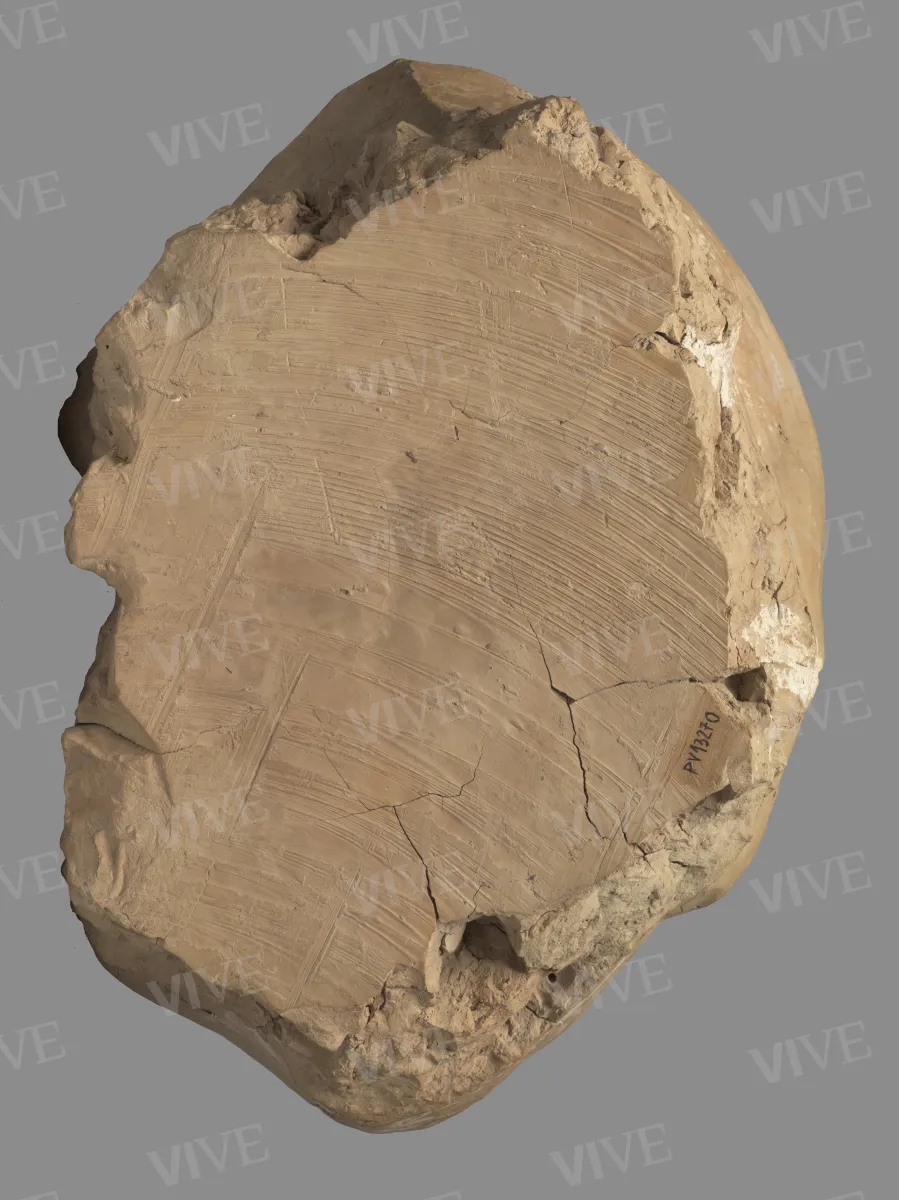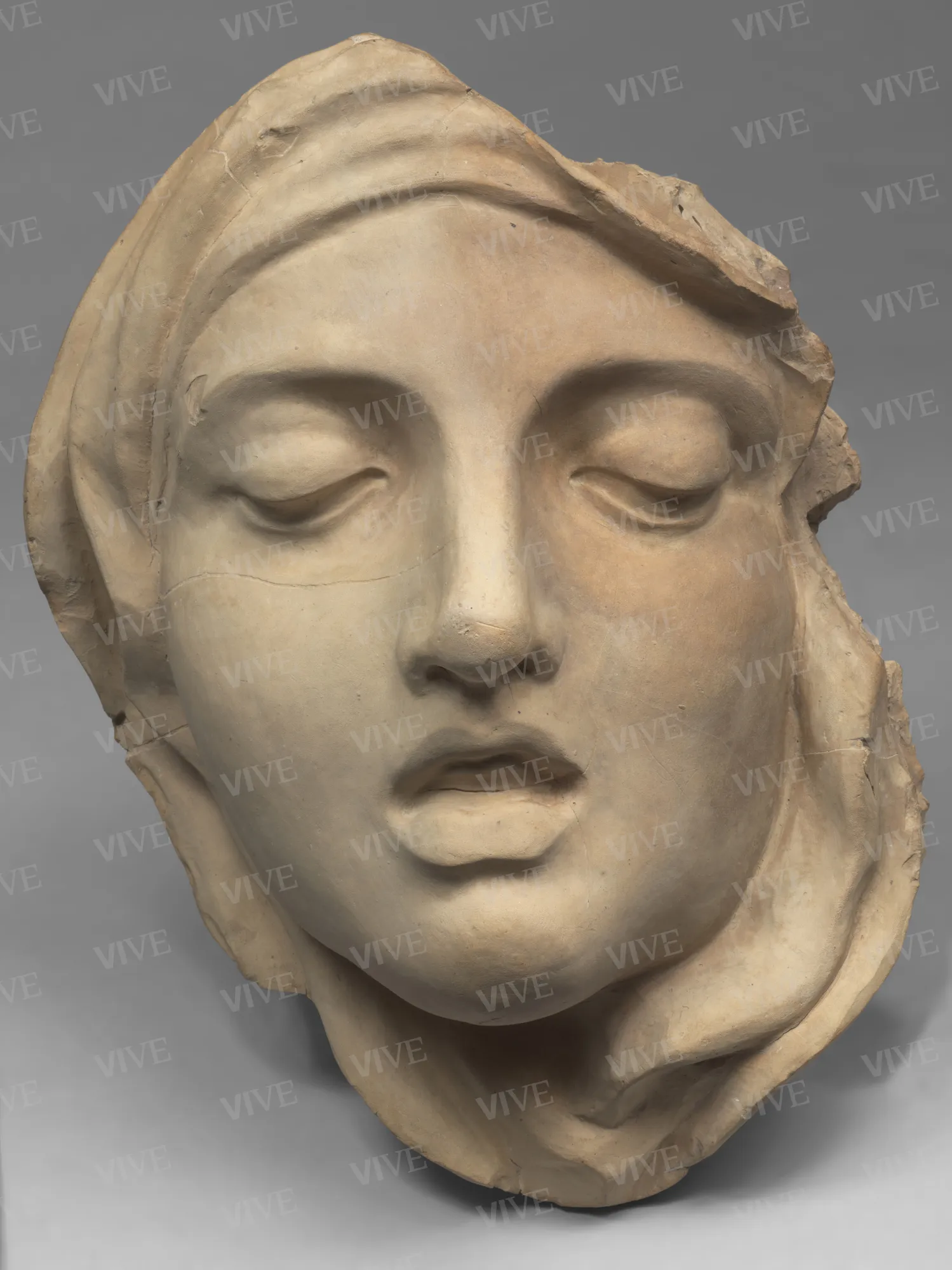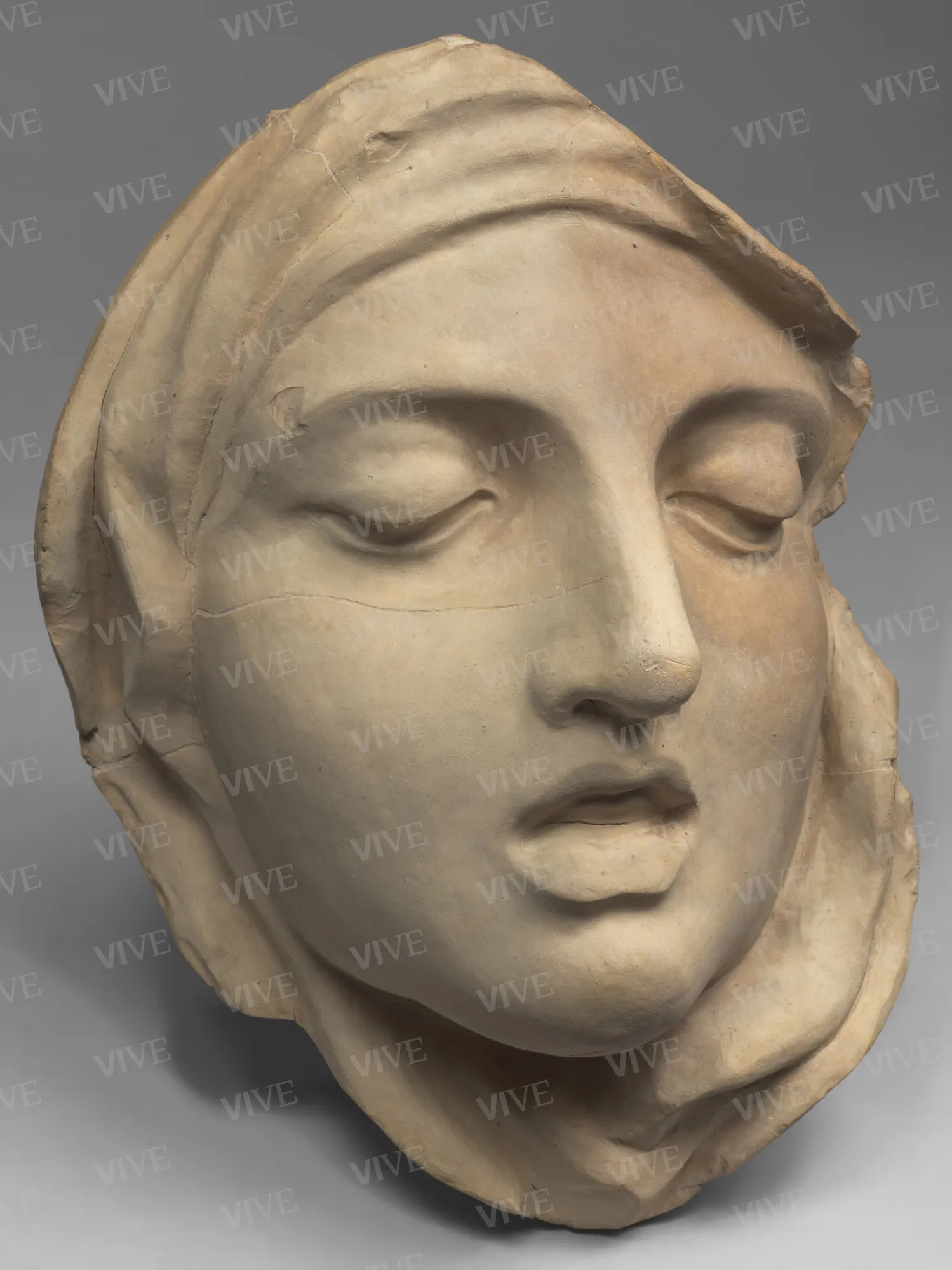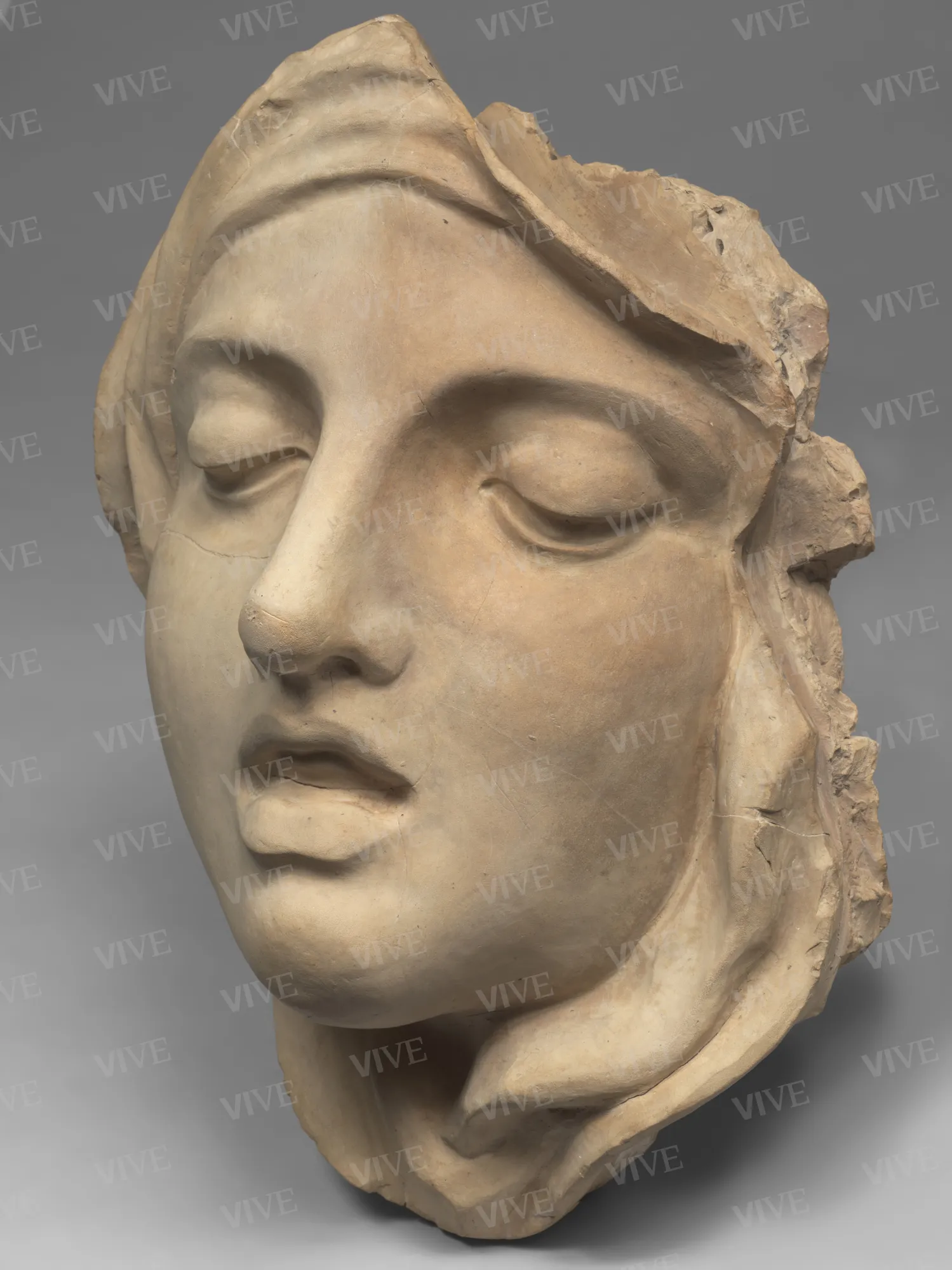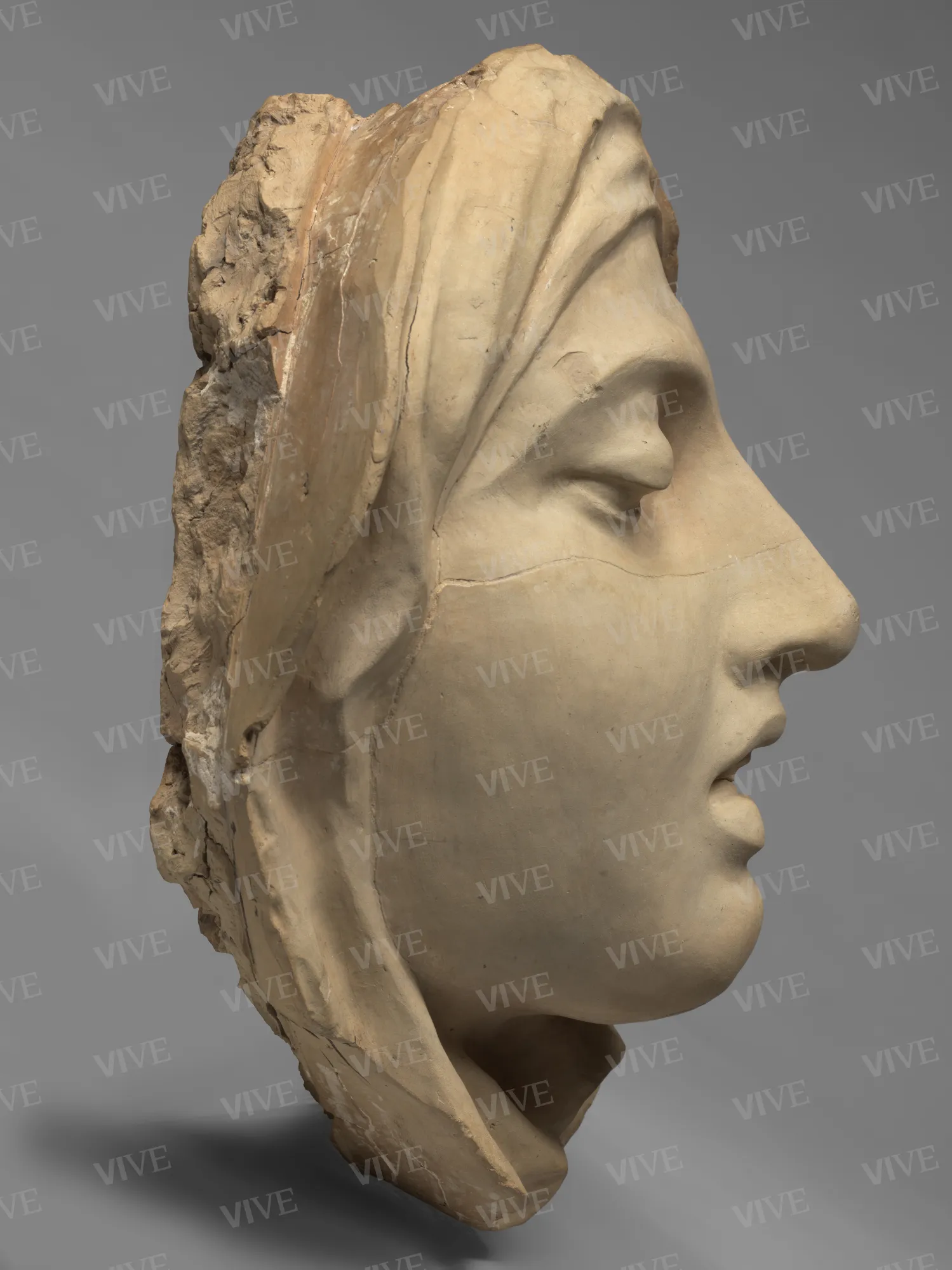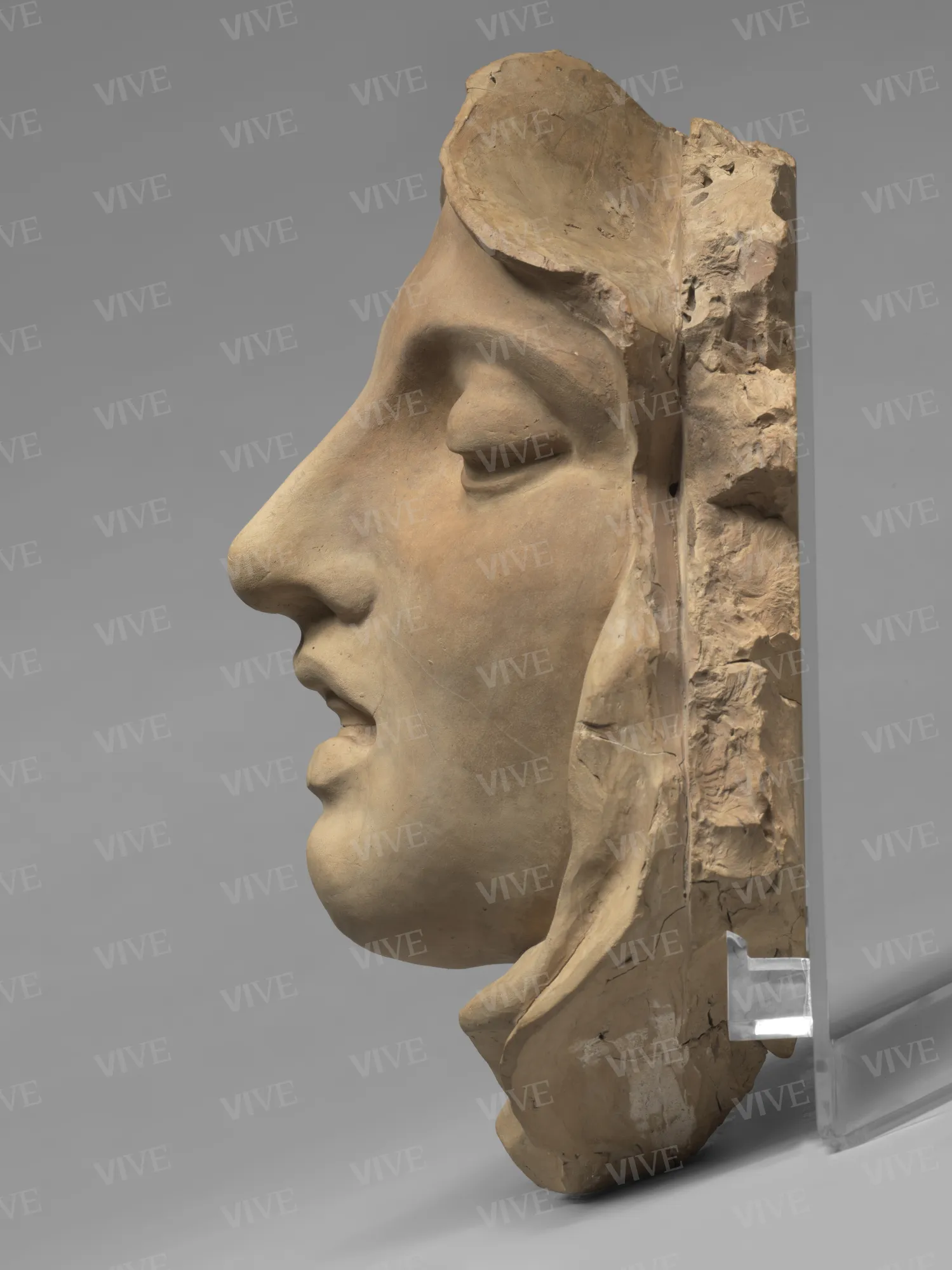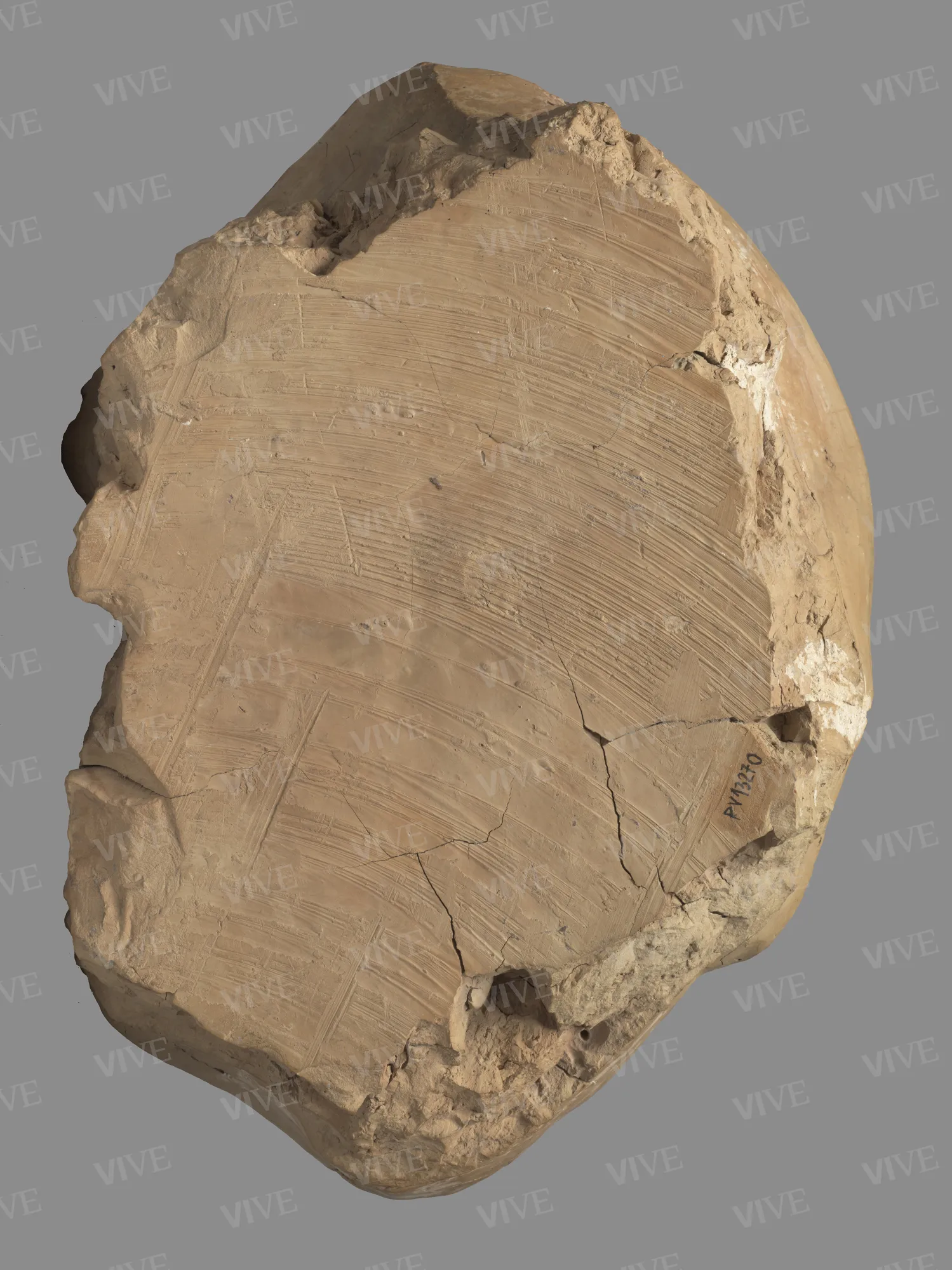Face of Saint Teresa of Avila
Workshop of Gian Lorenzo Bernini 1649–1650
Teresa of Avila’s face, framed by the folds of her cloak, is sculpted to reflect the impact of mystical transverberation as described by the Carmelite in her own writings. Reflecting a deliberate emphasis on expressive features, her mouth appears open with visible upper teeth, suggesting emotional intensity. The nose and the recesses of the eyes are distinctly modeled, with half-closed eyelids indicating a state of ecstasy and hollowed pupils that enhance the impression of an ecstatic gaze as the head inclines. This terracotta piece is attributed to the workshop of Gian Lorenzo Bernini.
Teresa of Avila’s face, framed by the folds of her cloak, is sculpted to reflect the impact of mystical transverberation as described by the Carmelite in her own writings. Reflecting a deliberate emphasis on expressive features, her mouth appears open with visible upper teeth, suggesting emotional intensity. The nose and the recesses of the eyes are distinctly modeled, with half-closed eyelids indicating a state of ecstasy and hollowed pupils that enhance the impression of an ecstatic gaze as the head inclines. This terracotta piece is attributed to the workshop of Gian Lorenzo Bernini.
Details of work
Catalog entry
The terracotta, which was modelled solely on the front, was published in relation to the statuary group depicting the Transverberation of Saint Teresa. This work was commissioned by Cardinal Federico Cornaro from Gian Lorenzo Bernini (1598–1680) for the altar of his chapel in Santa Maria della Vittoria (Cannata 1999). Coated with a fine, smooth patina consisting of water and clay powder, the clay artifact accurately replicates the features of the Carmelite nun as sculpted by the artist. The near-exact match in dimensions with the completed piece and the absence of reference markers for marble translation have led scholars to interpret the terracotta not as a preparatory sketch, but rather as a model intended to assess the correct placement of the sculpture within the chapel (Cannata 1999; Cannata 2003; Schütze 2005). This interpretation also accounts for the exceptionally smooth and polished surface, a feature atypical of preparatory studies and notably inconsistent with Bernini’s generally more dynamic clay works (Giometti 2011; Dickerson, Sigel 2012; Draghi 2015). Given that terracotta was not employed during the preparatory phase before the marble transposition, we may therefore reject the hypothesis of Bernini’s authorship and instead attribute the work to his workshop.
Jacopo Curzietti
Entry published on 16 October 2025
State of conservation
Fair. In addition to firing-related cracks—some of which have been repaired—there are minor chips present along the edge of the drapery and on the right eyebrow.
Restorations and analyses
1998–1999: restoration supervised by Livia Carloni;
2010: restoration by Davide Fondaro and Livia Sforzini;
2012: Diagnostic analyses conducted by Marco Cardinali and Matteo Positano of Emmebi Diagnostica Artistica, Rome.
Inscriptions
There are marks inscribed on the left cheek of the clay, which may constitute an initial or monogram that is now indecipherable.
Provenance
Rome, Collezione Evangelista (Evan) Gorga, documented in 1948;
Rome, Museo Nazionale di Palazzo Venezia, 1949.
Exhibition history
Rome, Museo Nazionale di Palazzo Venezia, Gian Lorenzo Bernini. Regista del Barocco, May 21–September 16, 1999;
Vatican City, Braccio di Carlo Magno, Visioni ed estasi. Capolavori dell’arte europea tra Seicento e Settecento, October 14, 2003–January 18, 2004;
Bonn, Kunst- und Ausstellungshalle der Bundesrepuklik Deutschland, Barock im Vatikan. Kunst und Kultur in Rom der Päpste II. 1572–1676, November 25, 2005–March 19, 2006;
Berlin, Martin-Gropius-Bau, Barock im Vatikan. Kunst und Kultur in Rom der Päpste II. 1572–1676, April 12–July 10, 2006;
New York, The Metropolitan Museum of Art, Bernini. Sculpting in Clay, October 3, 2012–January 6, 2013;
Fort Worth, Kimbell Art Museum, October 3, 2012–January 6, 2013, February 3–April 14, 2013;
Rome, Fondazione Roma Museo Palazzo Cipolla, , Barocco a Roma. La meraviglia delle arti, April 1–July 26, 2015.
References
Cannata, in Bernardini Maria Grazia, Fagiolo dell'Arco Maurizio (a cura di), Gian Lorenzo Bernini. Regista del Barocco, catalogo della mostra (Roma, Museo Nazionale di Palazzo Venezia, 21 maggio-16 settembre 1999), Ginevra-Milano 1999, pp. 350-351, n. 55;
Cannata, in Morello Giovanni (a cura di), Visioni ed estasi. Capolavori dell'arte europea tra Seicento e Settecento, catalogo della mostra (Città del Vaticano, Braccio di Carlo Magno, 14 ottobre 2003-18 gennaio 2004), Roma-Milano 2003, pp. 229-230, n. 67;
Schütze, in Frings Jutta (a cura di), Barock im Vatikan. Kunst und Kultur in Rom der Päpste II. 1572-1676, catalogo della mostra (Bonn, Kunst- und Ausstellungshalle der Bundesrepuklik Deutschland, 25 novembre 2005-19 marzo 2006; Berlino, Martin-Gropius-Bau, 12 aprile-10 luglio 2006), Leipzig 2005, p. 414, n. 257;
Giometti Cristiano (a cura di), Museo Nazionale del Palazzo di Venezia. Sculture in terracotta, Roma 2011, pp. 50-51, n. 28;
Dickerson, Sigel, in Dickerson Charles D., Sigel Anthony, Wardropper Ian (a cura di), Bernini. Sculpting in Clay, catalogo della mostra (New York, The Metropolitan Museum of Art, 3 ottobre 2012-6 gennaio 2013; Fort Worth, Kimbell Art Museum, 3 febbraio-14 aprile 2013), New Haven and London 2012, pp. 199-202, n. 18;
Draghi, in Bernardini Maria Grazia, Bussagli Marco, Barocco a Roma, catalogo della mostra (Roma, Fondazione Roma Palazzo Cipolla, 1 aprile-26 luglio 2015), Milano 2015, p. 389, n. 98.

